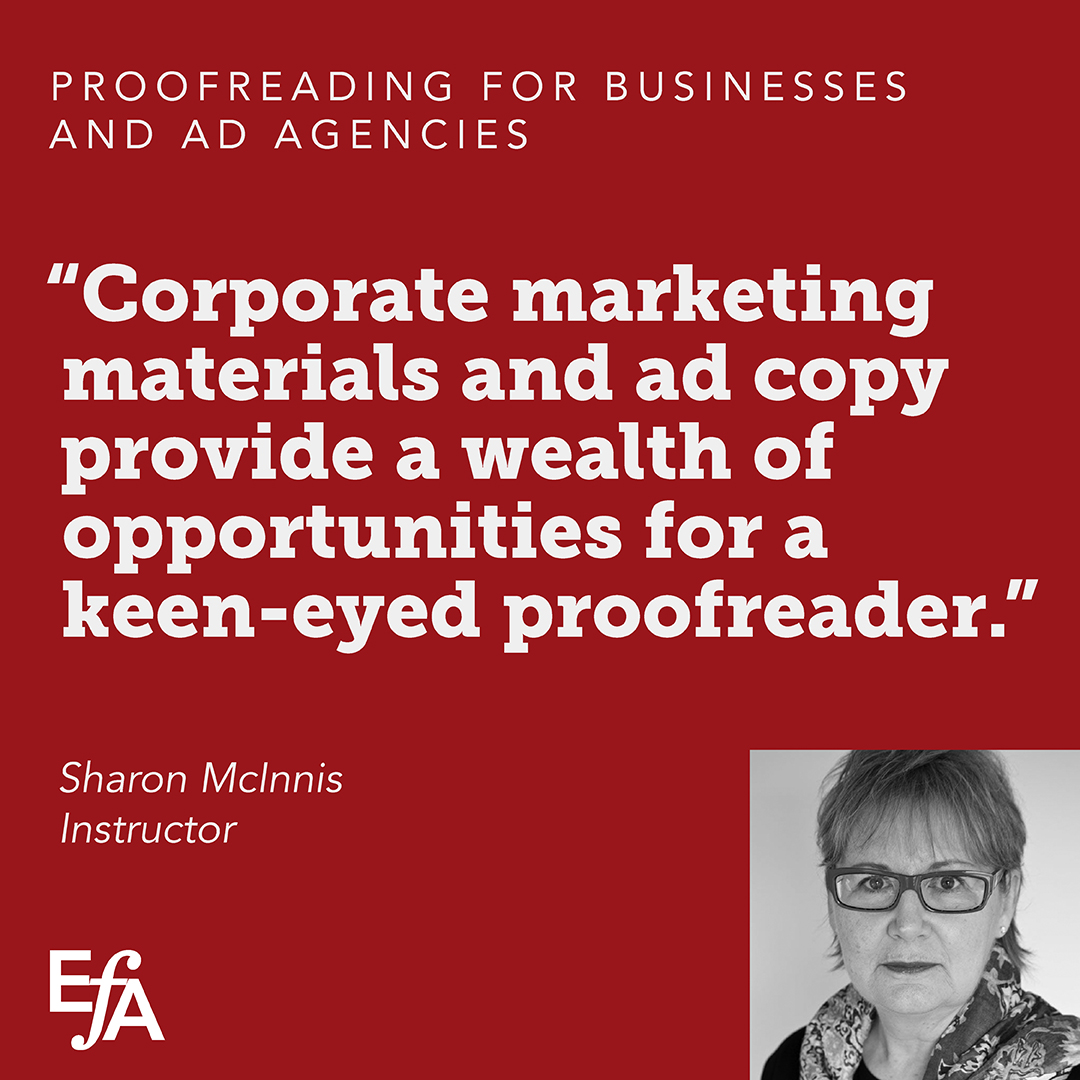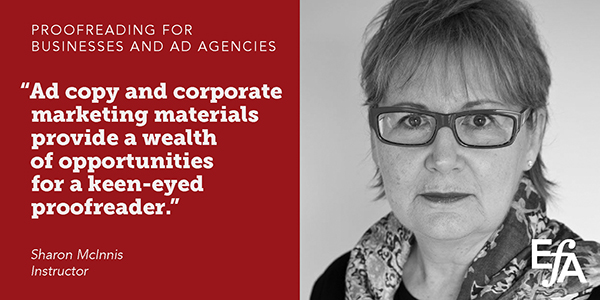Description
Our courses are asynchronous, meaning you never need to be at your computer at any specific hour. More information about how these classes are conducted is available here.
After placing your order, your course will be added to your personal course library on our education site. That site has different login information from the main EFA site. Please check your email for information on how to access the course.
If this session is full or the dates don’t work for you, join the waitlist to be informed of last-minute openings and future sessions.
Please note that the start date for this course has changed. It now begins March 27.
Do typos jump off the page at you? Do you gasp when a lone em dash suddenly appears among a sea of en dashes? Do you see gaps in a page, or notice lines sitting all by themselves? Do you stare at a photo, wondering whether it has been reversed? By the time you complete this introductory course on proofreading for businesses and ad agencies, you’ll be answering “yes” to all of these questions.
Corporate proofreading is a significant and lucrative field of editing, but there are specific nuances to working with businesses and ad agencies; the five modules of this course focus on proofreading and fact-checking corporate materials. This course does not cover proofreading or editing of novels, magazines or non-fiction materials.
- Week 1 provides an overview of proofreading, including definitions, and the differences between proofreading and copyediting. We’ll also cover what skills a corporate proofreader needs, how to get (or sharpen) those skills, and where to find equipment and tools.
- Week 2, which gets into the nitty-gritty of proofreading, covers different types of strategies and processes, and offers several handy checklists. We’ll also talk about fact-checking—an essential part of corporate proofreading.
- Week 3 touches lightly on some mechanics of writing, including common spelling errors, grammar basics, commonly confused words, country-based spelling differences, punctuation basics, and avoiding buzzwords, jargon and wordiness.
- Week 4 walks you through style resources available, and through using a basic writing style guide/glossary for each client—and for your client’s clients. If you haven’t used a writing style guide/glossary in the past, you’ll wonder how you ever managed without one!
- Week 5 is all about markup. Once you’ve found all those errors, you need to let your client know what they are and how to fix them—usually via tracked changes in a Word doc or by marking up a PDF. We’ll also take a very, very quick glance at proofreader’s marks, and give you some resources to learn how to use them.
Each week, there will be a short, self-marked assignment. An answer key will be provided, and you’ll have the opportunity to review your assignment and the answers with the instructor. In the forum, you can discuss the assignments and answer keys further with the instructor and with your fellow students. Expect to spend 1–2 hours per week on assignments, and 1–2 hours per week in forum discussions.
No previous proofreading experience is needed, but it helps if you have a sharp eye, the ability to focus in on details, and a fairly long attention span. Most importantly, you need the patience to double-check everything, and an interest in working with businesses and ad agencies. If that appeals to you, this course will give you everything you need to launch your corporate proofreading career or add to your existing editing business.
This course is open to students at all levels.
Sharon McInnis, also known as the ProofingQueen, has been a professional proofreader and fact-checker for 20+ years. Her client list includes dozens of corporations (including a leading mining company, Canada’s largest port and one of the world’s largest ferry operators), along with advertising agencies, PR firms, and many marketing and communications companies. In her spare time, Sharon is an amateur jazz vocalist.



